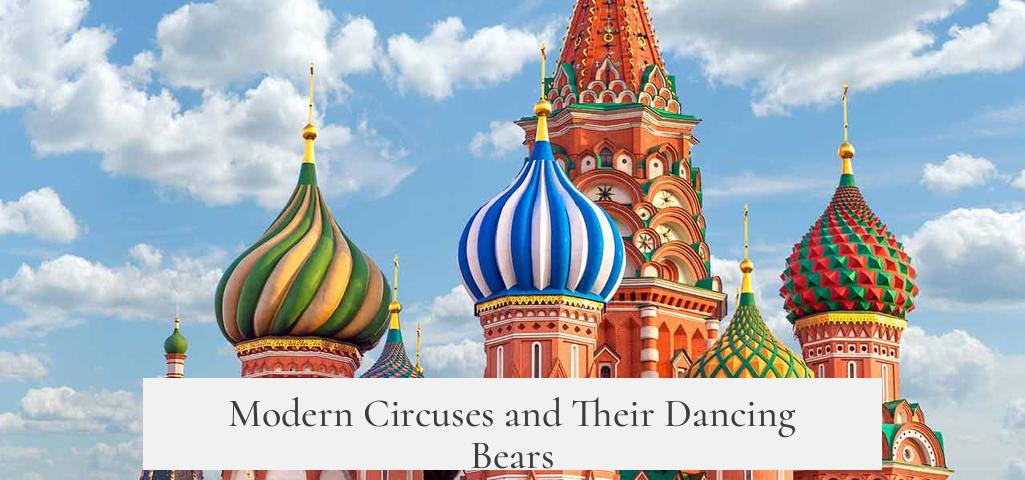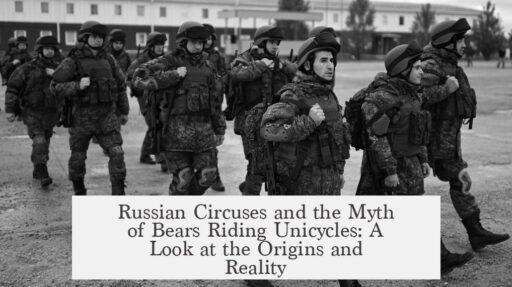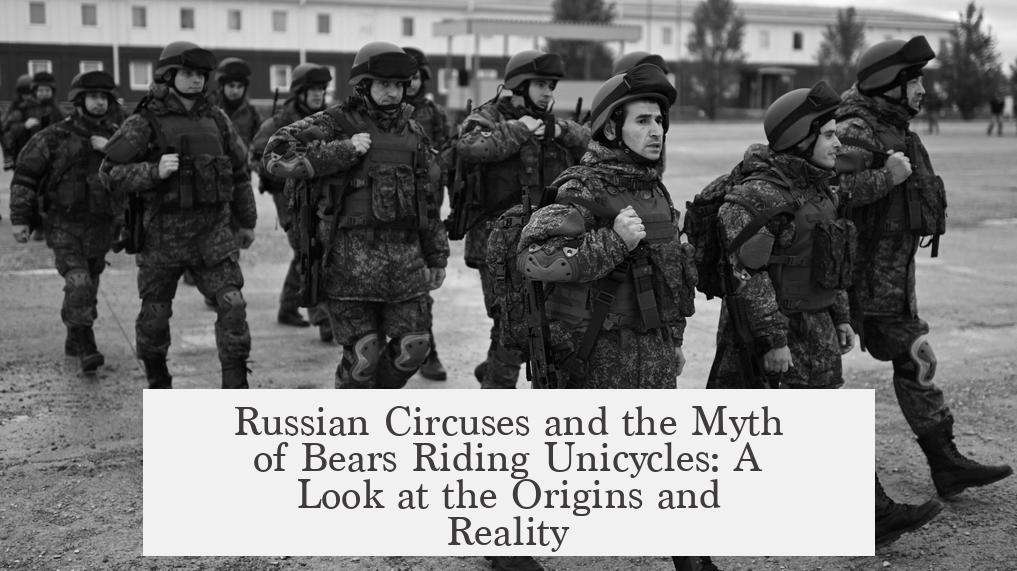No verified evidence confirms that Russian circuses ever trained bears to ride unicycles. Instead, bears riding bicycles form the core of such animal performances in Russia.
Russia has a long history of featuring trained bears in public shows. This practice extends back to at least the 1500s. Traditional events included bear versus bear fights, man versus bear confrontations, bear baiting, and comedic acts. Comedy bears were typically captive-born or raised in semi-captivity. Training methods were harsh, often involving blinding or declawing to control the animals.
Such traditional bear shows were well known through the 19th century, even referenced by notable Russian authors like Pushkin. However, by the 1860s, these spectacles faced legal bans and gradually disappeared by the early 20th century.
Modern Russian circuses continue to feature bears performing tricks, but these acts mostly involve bears sourced from zoos. The shows often include bears riding bicycles, not unicycles. Animal rights activism increasingly challenges these performances today, highlighting concerns about animal welfare.
Despite this, no credible English-language documentation supports the claim that bears were taught to ride unicycles. Some Russian-language scholarship exists but does not affirm the unicycle aspect. This detail appears absent from verified circus records or reliable reports.
The widely popular image of a bear riding a unicycle likely emerges from several factors:
- The strong historical tradition of comedy bears performing in Russia.
- Modern circus acts where bears actually ride bicycles.
- Folklore and stereotypes about Russian wild animal performances.
This combination created a vivid cultural symbol, spreading through media and collective imagination. It simplifies and exaggerates circus realities, blending history and myth.
| Aspect | Details |
|---|---|
| Traditional Bear Shows | Fighting, baiting, and comedy acts; popular 1500s–early 1900s |
| Modern Circuses | Bears perform tricks; ride bicycles but no evidence of unicycles |
| Animal Welfare | Increase in protests; use of zoo bears; harsher controls reduced |
| Origin of Image | Blend of historic tradition, bicycle-riding bears, and Russian folklore |
- Russian circuses have not definitively trained bears to ride unicycles.
- Historical and modern practices feature bears in performances, mostly on bicycles.
- The bear on a unicycle trope mainly derives from folklore and cultural imagination.
- Animal rights concerns have narrowed the scope of traditional bear acts.
Did Russian Circuses Actually Get Bears to Ride Unicycles? The Truth Behind the Widespread Image

Before diving into the dizzying world of bears on one wheel, let’s answer this directly: there is no verified evidence that Russian circuses actually trained bears to ride unicycles. The legendary image of a bear balancing expertly on a unicycle remains more myth than documented fact.
So, why is this mental picture so widespread? Let’s unpack the history, traditions, and cultural flavor that made the “Russian bear on a unicycle” a popular (and hilarious) stereotype.
The Big Bear Picture: Russia’s Long-Standing Tradition
Russia has a centuries-old tradition of performing trained bears. This is not some modern circus gimmick but a cultural artifact dating back to at least the 1500s. These shows included everything from bear fights to baiting and, importantly for our story, comedy acts.
- Bears were trained for public shows, often central to rural entertainment and traveling troupes.
- The bear trainers were akin to Russia’s historical jesters or harlequins, known as skomorokhs.
- The types of shows included bear vs bear fights, man vs bear fights, bear baiting with dogs, and comedic performances featuring bears acting out funny scenarios.
The comedic acts especially played with the idea of bears doing unusual, “human-like” things—dancing, playing instruments, or simply goofing around. Although these shows often had a dark side, including trainers blinding or declawing these captive-born bears, the performances captured the imagination and became ingrained in culture.
When Did Bears Start Riding Wheels?
Fast forward to modern-day Russia. Some contemporary circuses still use bears as performers—and yes, these bears sometimes ride bicycles. The critical detail here is “bicycles,” not unicycles. Multiple credible sources confirm trained bears riding two-wheeled bicycles in Russian circuses.
Unlike their ancestors used for fights or baiting, today’s bears mostly come from zoos and receive training for relatively benign acts. Yet, these acts spark growing protests from animal rights activists who question the ethics of putting bears—even on bicycles—in circuses.
Where Did the Unicycle Image Come From?

The popular image of bears on unicycles likely evolved from a mix of several elements:
- The deep-rooted tradition of bears performing in Russian comedy shows.
- The modern circus acts where bears ride bicycles, an unusual and eye-catching feat.
- Western and global folklore about Russian wild animal performances, often exaggerated and sensationalized.
- The natural comedic appeal of something as improbable as a bear managing balance on a tiny unicycle—it’s a mental image hard to shake.
However, there is no English-language source providing direct evidence that bears actually mastered unicycles in Russian circuses. Some Russian scholarship hints at related traditions but doesn’t confirm unicycles specifically. So, the notion probably grew from a combination of playful exaggeration and cultural mythmaking.
Why Does This Myth Matter?
This myth is more than just a quirky factoid. It offers insight into how cultural stereotypes form and persist. Russian bears represent “the wild” and “the untrainable” in many Western imaginations. Showing a bear riding a unicycle neatly flips this idea on its head—making the untamable bear a polished entertainer. It’s a story that feels both absurd and possible, perfect for cartoons, jokes, and viral images.
So, What About the Real Shows?
Historically, comedy bear shows were very real and went beyond just rides. Dating back to the 1600s, adults and children alike loved seeing bears perform tricks. Famous Russian writers like Pushkin even referred to these shows, indicating their cultural resonance.
By the mid-19th century, these spectacles began to fade because of changing laws and social attitudes—traditional bear baiting and fighting were outlawed, removing the more violent elements. Yet, the allure of trained bears remained strong, transitioning into modern circus acts.
Modern Circuses and Their Dancing Bears

Today, if you visit a Russian circus—and if animal acts are still part of the show—you might spot bears riding bicycles. That’s as close as it gets to unicycles. These performances still impress but come with ethical debates. Animal rights groups increasing call out circuses for using wild animals for entertainment, and bear acts face particular scrutiny.
Still, the tradition’s echoes live on, reminding audiences of a unique cultural heritage. Yet, for now, actual unicycling bears remain the stuff of legend.
What Can We Learn Here?
- Traditions evolve. What started as rough-and-tumble bear shows centuries ago turned into comedy acts and, later, more refined circus performances.
- Information can morph into myth. The absence of direct evidence makes it clear that bears riding unicycles is more myth than reality.
- Cultural stereotypes shape popular images. Russian bears riding unicycles might never have existed but work as a powerful symbol of taming the wild.
- Ethics matter. Modern bear acts highlight ongoing concerns about animal welfare in entertainment.
Want to Dig Deeper?
Explore historical sources like the Royal Hunts in Rus’, a 3-volume account documenting Russian wild and trained animal traditions. Also, Russian-language materials such as recent journalism discuss modern circuses and the controversies around bear acts.
Final Circus Ring: Truth and Fable
In summary, Russian circuses did train bears to ride bicycles but there is no reliable proof of bears riding unicycles. The image itself stems from a blend of historical bear performances, circus comedy, and cultural stereotypes. It’s an enduring myth fueled by the human love for the absurd and our fascination with the wild tamed.
So next time someone tells you they saw a bear pedal a unicycle in a Russian circus, you can smile knowingly and share a bit of real history behind the fuzzier parts of the story.




